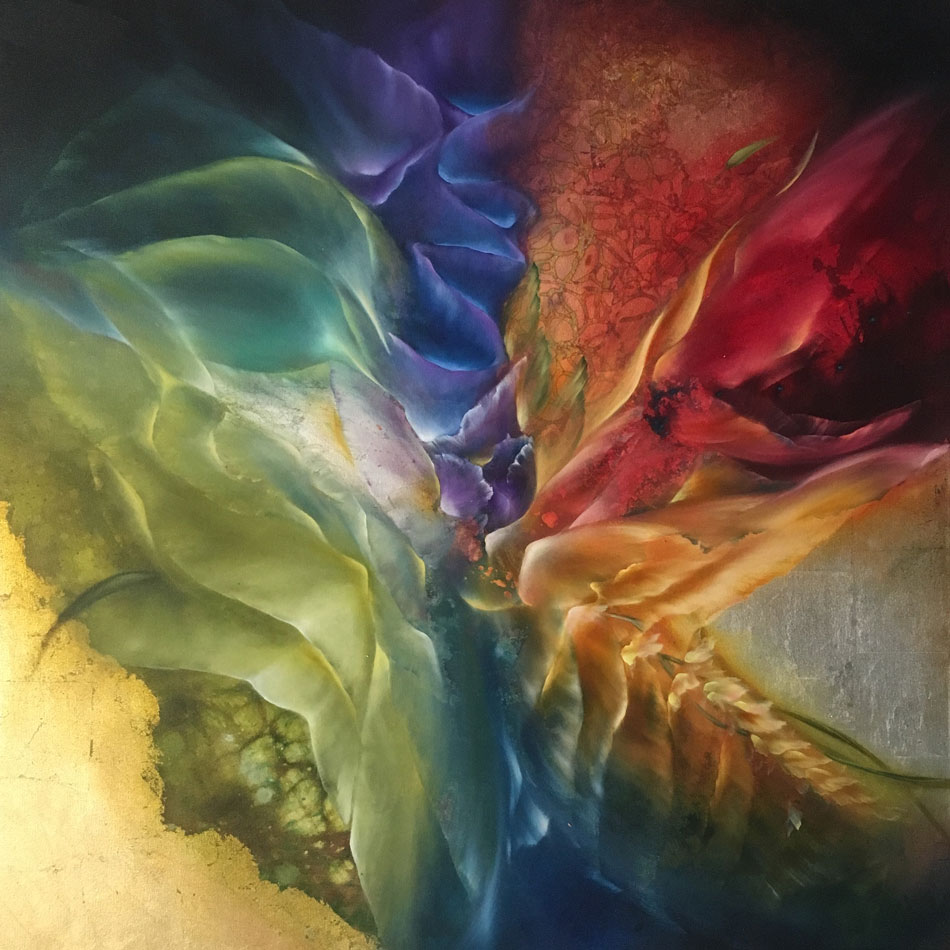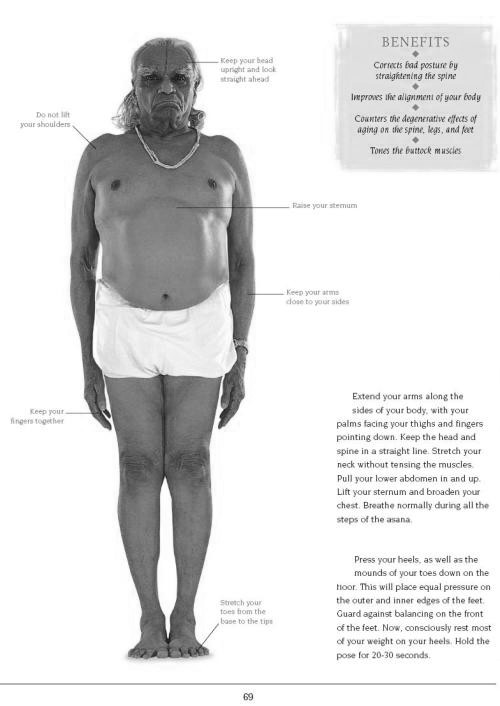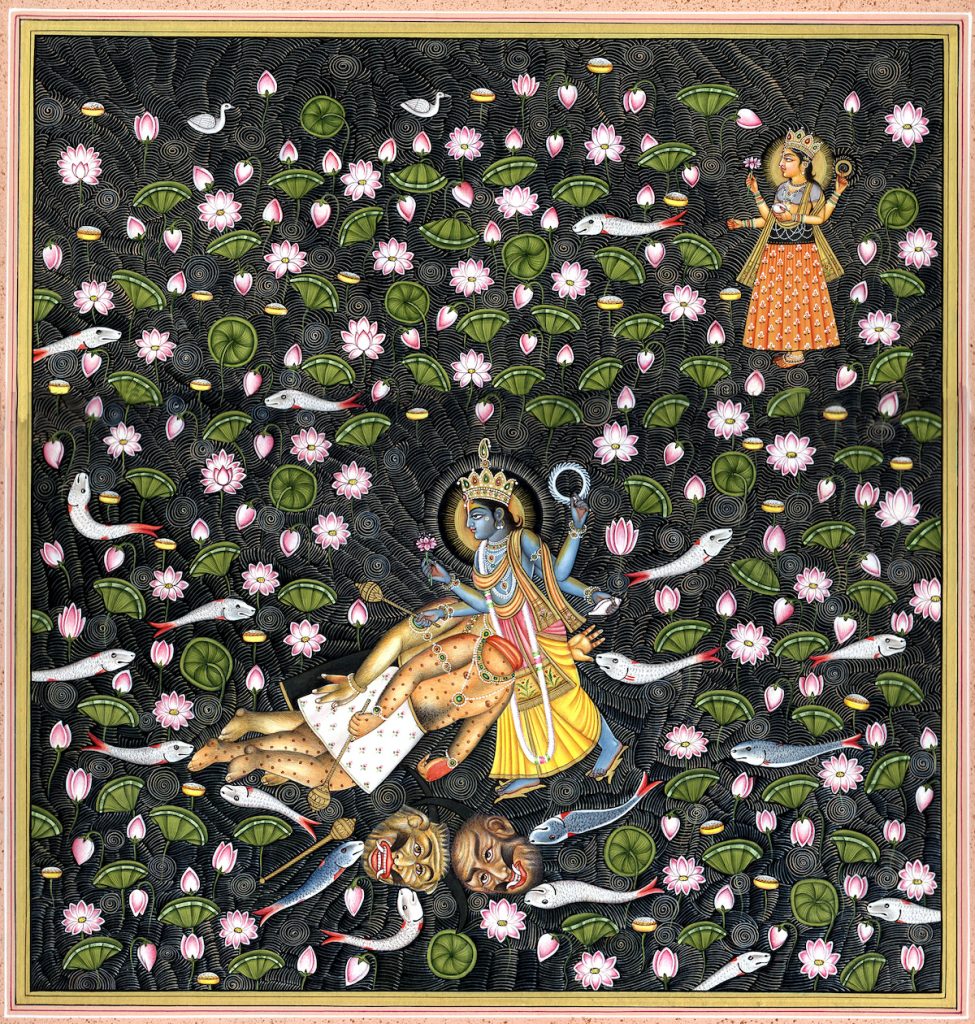How was day 1 of the Tamas-purge?
Tomorrow is Saturday and then Sunday. The weekend. The days when you tend to wake late, eat wrong and binge on OTT. Those exercises that I mentioned yesterday seemed so easy yes? I think you forgot the upcoming weekend:)
So the challenge really is to continue the good stuff through the weekend. All the best!
Here is a simple āsanā that can help:
Tāḍāsana
Difficulty level – 1 (easy)
Time commitment : 10 minutes thrice a week

We are nearly halfway through the course, and it’s time to introduce you to our first āsanā.
A few points to note:
- Time to practice – Ideally before sunrise or during sunset. However, for beginners, early morning or late evening is fine, but on an empty stomach (2 hours after eating a light meal)
- Place – A calm, quiet and well-ventilated place would do. Since this āsanā is a primary posture, not requiring too much space, it can be done on your balcony as well.
- Yoga mat – is not necessary for this āsanā. A rug would suffice. Not too soft though.
How you do it
Preparatory
Don’t start cold. Perform an initial set of basic warm-up exercises – rotate your feet, your knees, your hips, shoulders, wrists and head, three counts clockwise, three counts anti-clockwise, slowly and in succession.
ताडासन (Tāḍāsana) – also known as समस्थिति (Samasthitiḥ).

Physical
- Stand with the feet together, or about 10 cm apart, and the arms by the sides.
- Lift and spread your toes and the balls of your feet, then lay them softly down on the floor. Rock back and forth and side to side. Gradually reduce this swaying to a standstill, with your weight balanced evenly on the feet.
- Steady the body and fix your eyes on a point slightly above the level of the head.
- Activate your thigh muscles and lift your knee caps. Tuck your pelvis and tighten your buttocks.
- Hang your arms beside your torso with your hands gently engaged, fingers towards the floor.
- Imagine a line of energy all the way up along your inner thighs to your groin, and from there through the core of your torso, neck, and head, and out through the crown of your head. On an inhale, roll your shoulders up to your ears and on an exhale, roll your shoulders down your back. This straightens your spine and improves posture.
- Balance the crown of your head directly over the center of your pelvis, with the underside of your chin parallel to the floor, throat soft, and the tongue wide and flat on the floor of your mouth. Soften your eyes.
- Start with a 30 second count – progress upto a minute. This is one round.
- Practice 5-8 rounds, with a few seconds of relaxation between rounds.
Breathing
Gentle breathing, without strain or effort. Take in deep slow inhalations, with an expanded chest, and deep slow exhalations, with your stomach moving towards your spine. Your breathing should not be noisy – rather, should feel like the gentle waves of a calm ocean.
Awareness
Maintain awareness on the whole body, from top to bottom, and on maintaining balance and on the breath. Try to clear your mind of unwanted thoughts. You do not need to focus or concentrate – just be aware.
Benefits
This āsanā helps develop physical and mental balance. The entire spine is stretched and loosened, helping to clear up the congestion of the spinal nerves at the points where they emerge from the spinal column. The whole body is engaged, yet not strained – hence this āsanā serves as an excellent warm-up or preparatory āsanā for more advanced asanas in a sequence.
Things to note
The key to āsanā practice is breathing and awareness. Without these aspects, yog is merely physical exercise.
As you practice this āsanā, begin to move your awareness around your body – a kind of a body scan, to connect with each part of your physicality, and be aware of your physical nature and every aspect of it. This āsanā is also practised between other advanced āsanās, to come back to position and reflect on the benefits of the preceding āsanā.
Variation
Beginners can stand with their backs to a wall, with the back of your head, shoulders, buttocks, and heels touching the wall, for good posture. Once stabilised, can move towards practising without the support of the wall (in 1-2 weeks).
More advanced practitioners can practice this āsanā with your eyes closed, or try raising your hands over your head for a full stretch.
Read the previous part here...
The body, the mind and the intellect…
आत्मानँ रथितं विद्धि शरीरँ रथमेव तु । बुद्धिं तु सारथिं विद्धि मनः प्रग्रहमेव च – ātmānam̐ rathitaṃ viddhi śarīram̐ rathameva tu | buddhiṃ tu sārathiṃ viddhi manaḥ pragrahameva ca || – says the Katha Upanishad. Know the âtman (Self) as the rider of the chariot, the body as the chariot, know also intelligence as the driver; know the minds as the reins. So ‘Suratha’ is meant to denote the strong body, the physicality of the king.
Samādhi indicates a focused mind – sam, “together” or “integrated”; ā, “towards”; dhā, “to get, to hold”: “to acquire integration or wholeness, or truth”. The merchant was single-pointed in his approach towards his business and hence was successful.
Both Suratha and Samādhi were successful, but that was not enough. So is the case of a person who has a strong body and a strong mind. As the Katha Upanishad says – the Self is the true rider, and what makes us realize this? Medhas – which means intellect, or knowledge. A strong body, a focused mind, and an awakened intellect – this is the person who is not only successful, but also the way he defines success is different – a more spiritual, holistic approach to work and life.
Suratha said “Oh revered Rishi! we are grieving. I lost my kingdom, yet I feel attached to everything that is associated with it. My elephant, my people, my treasury…And this is Samādhi. He was disowned by his family, and yet he feels affectionate towards them. He still thinks about their welfare. And so, both him and I came here thinking that we will feel better, in such tranquility, but the opposite seems to be happening. We are torn by our own internal turmoil, and the result is more misery. We are men of knowledge – I would have expected both of us to know better than to think this way. Please help us, please guide us…”

Rishi Medhas replied “Suratha, Samādhi, nothing in this world is as it seems to be. What you perceive through your senses, always deceives. Humans and animals both share the ability to see, hear, smell, taste and touch. But is your experience the same? What one human being experiences, is different from the other, and depends on the capacity of the one who experiences. A man cannot smell from afar, but an animal can. The smell is there, it is just that we perceive it differently. And so if we speak from the standpoint of the sensory experience, my world is different from yours, and this is true for everyone.”
He continued “Everything appears in relation to something else. This, coupled with the complexities of human behavior, confuses one even more. Have you seen birds feeding their young ones? They do so out of instinct, even if they are hungry themselves. We humans, on the other hand, also feed our young, but with the expectation of a future reward. We also possess instinct, but in addition, we also have the ability to reason and make choices. But these choices are mostly driven by self-interest, desires and expectations.”
“All this is because of Devi Mahāmāyā, who is the cause of creation, delusion but also final liberation.”
We have all heard about moha and māyā. These words have no equivalent in English. Moha can be translated into delusion, but the actual meaning is closer to “loss of consciousness”. What causes moha? That is māyā. The Devi Mahātmyam describes māyā as the divine power of self-concealment – what it conceals is the infinite, the Brahman, the true Self.
“Tell us more about this Devi”, says Suratha. “How did she come into being? What is she like? Tell us more about her…”
And so Rishi Medhas narrates three stories, each describing a guna of the Devi. There are a lot of rākshasās, and a lot of battles, with the Devi eventually winning and establishing peace again and again. The frame story will continue, but we will approach each of the three stories in a different manner, exploring their deeper meanings, rather than taking them at face value. And in the process, we will attempt to answer some questions that we both have, on the significance of the Devi, and Navratri in general.
First Charita – the slaying of Madhu and Kaitabha
Long ago, the whole universe was filled with a great ocean. Sri Vishnu was in deep sleep, stretched out on the thousand-headed serpent Adishesha, floating in the middle of the ocean. From the wax in his ears, sprung two Asuras named Madhu and Kaitabha. They fed on the ocean-water, and grew strong.
Madhu and Kaitabha then began to wonder among themselves. “Where are we and why have we been born?” they thought. “Who created us?” They began to search for answers.
They then heard the sound of Mantras coming from above where they were. “Surely this is something that has to do with us being here”, they thought, and started to repeat what they heard. Thus, they inadvertently began to meditate on the mantra. They forgot to feed themselves, and chanted the mantra again and again, till this repetition and meditation became an austere penance that lasted one thousand years.
Pleased with their dedication, Devi Mahāmayā appeared before them and said “You have performed a severe penance. Ask me what you want, and I shall grant you a boon.”
The twins looked at each other, and then said “Grant us the boon to die at a time of our choosing. No one can kill us before we choose to do so.”
“Tathāstu!”, said Devi Mahāmayā. “You will be a thousand times stronger now. Only you will decide the time you die – no Deva or Asura can kill you before that. You are nearly invincible.”
Madhu and Kaitabha now became very powerful, and with power came arrogance. They came across Brahma, who was sitting on a lotus that had sprung from the navel of Sri Vishnu. The twins had not come across any living entity before, and so, they decided to test their powers on him.
“Why are you sitting on the lotus, oh divine being?” they said. “That seat is meant for us. If you think otherwise, then let us fight and decide who is stronger.” Saying this, they shook the lotus hard, and laughed.
Brahma knew that these asuras had been granted a boon by the Devi, and so thought to himself. “I will not be able to fight these two. Only Sri Vishnu can save me. But he is asleep. I have to wake him, and fast.”
And so Brahma tried to wake Sri Vishnu, but failed. After repeated attempts, he realized that Vishnu was in the state of Yoganidra, or meditative sleep, which was brought about by the power of Mahāmayā. And so he prayed to Devi Mahāmayā for help.
The Devi responded, and brought Sri Vishnu out of his sleep. “Oh creator of the Universe, why do you look so frightened? Why have you abandoned your task of creation, and woken me up instead?”, asked Sri Vishnu.
“Oh Lord of the Universe, I am in trouble. The asuras that were born from your ear-wax, have now got a boon from the Devi, and are invincible. They have challenged me, and I know that I cannot defeat them. I need your help!”
Sri Vishnu smiled and said “Don’t worry about them. Ask them to fight me instead. I will ensure that they meet the end they deserve.”
And so Madhu and Kaitabha started to fight Sri Vishnu. At first, the Lord of the Universe thought that he would defeat these twins easily, but he was mistaken. The battle stretched for five thousand years! Madhu and Kaitabha fought hard, and did not stop for even a minute. They truly seemed invincible.
“This is because of the boon that Devi granted these asuras”, thought Sri Vishnu as he continued to battle them. “Only she can show me a way to get the better of them.”
And so, Sri Vishnu prayed to Devi Mahāmayā, who appeared before him, and said…
to be continued…
ॐ देवी ब्रह्मचारिण्यै नमः॥
Om Devi Brahmacharinyai Namah॥
या देवी सर्वभूतेषु माँ ब्रह्मचारिणी रूपेण संस्थिता। नमस्तस्यै नमस्तस्यै नमस्तस्यै नमो नमः॥
Ya Devi Sarvabhuteshu Maa Brahmacharini Rupena Samsthita।
Namastasyai Namastasyai Namastasyai Namo Namah॥
So how does Sri Vishnu defeat the Madhu and Kaitabha? And what is the hidden meaning behind this story? Let us find out tomorrow!
